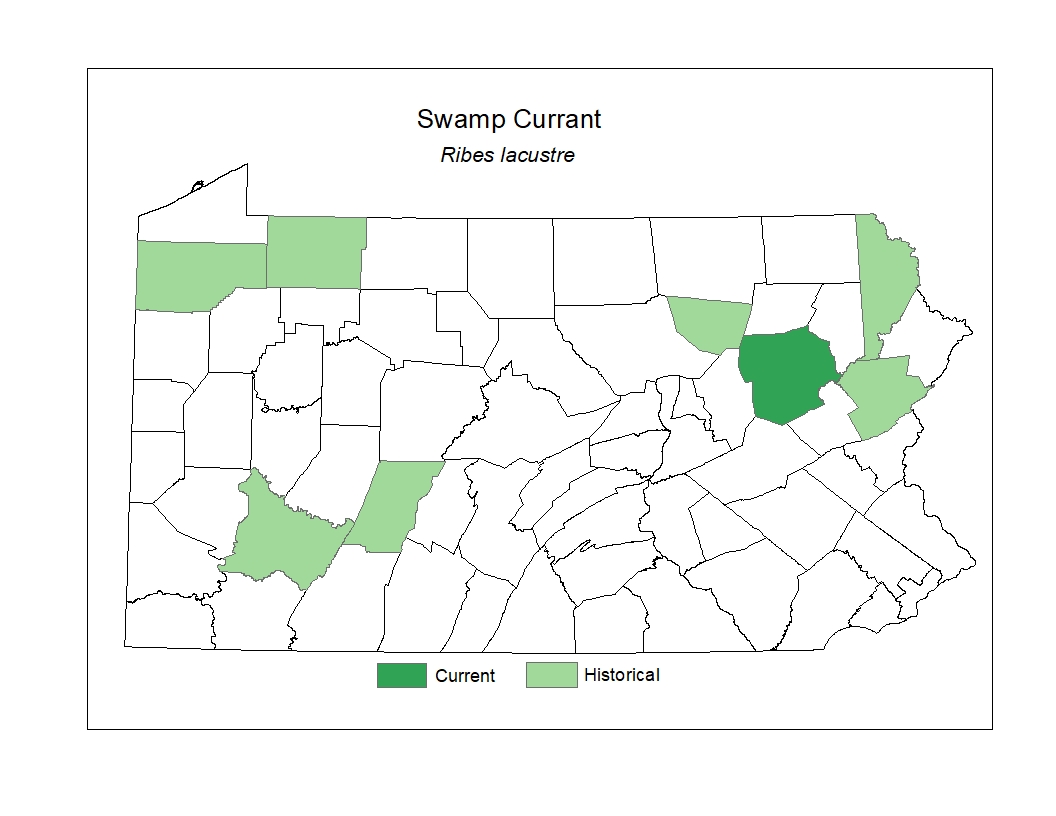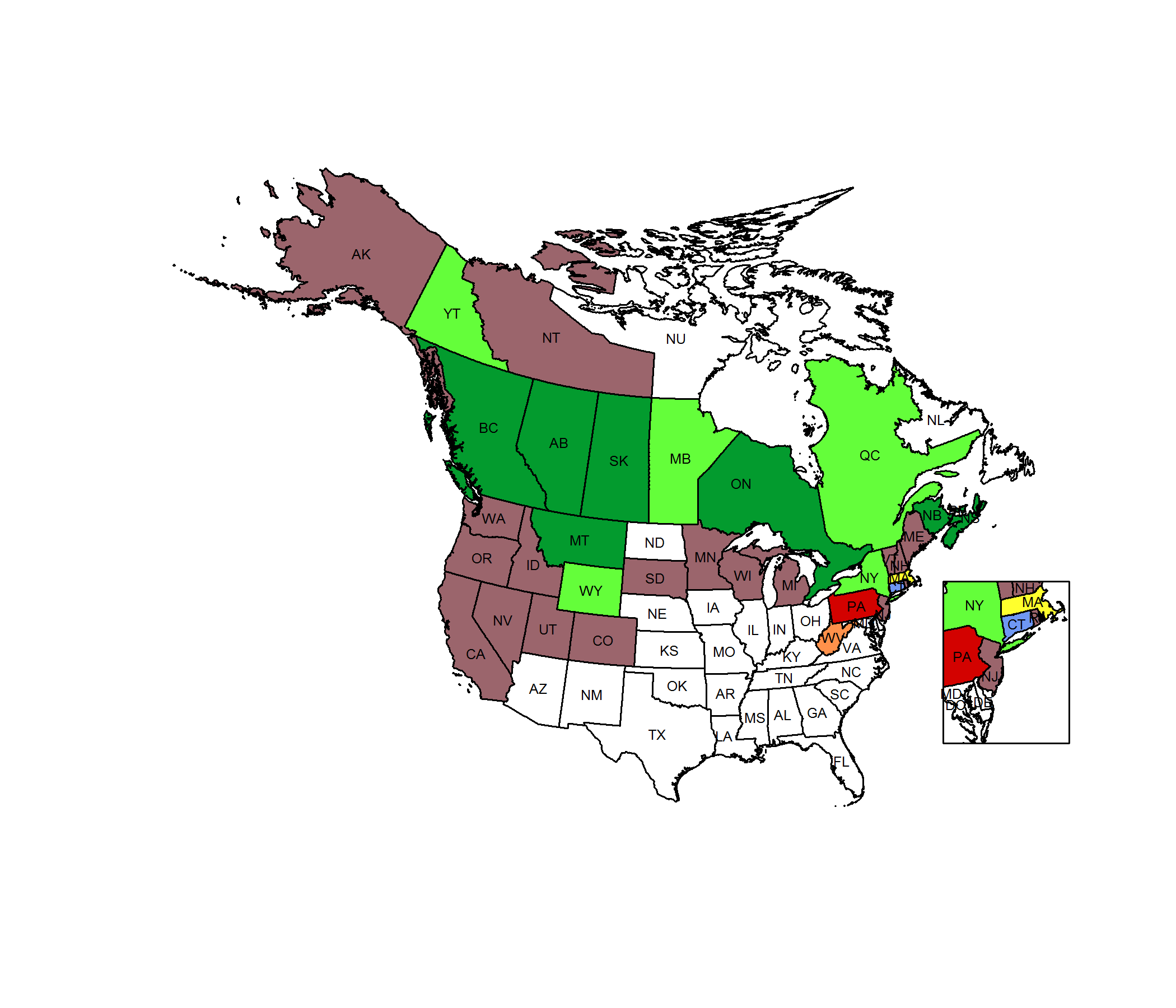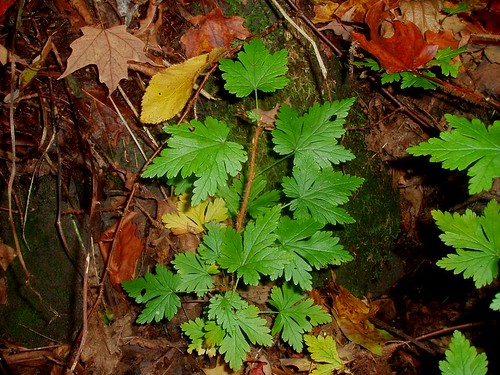 Species Factsheets
Species Factsheets
Ribes lacustre
Swamp Currant
State Status: TU
PBS Status: Pennsylvania Endangered (PE)
Federal Status:
Global Rank: G5
![]() rank interpretation
rank interpretation
State Rank: S1
Did You Know?
The leaves and bark of this species can be chewed and then placed on sores. The fruit of this plant is tart and juicy and can be cooked into a sauce.
Description
Swamp currant (Ribes lacustre) is a low sprawling shrub with bristly/prickly stems. The leaves are alternately arranged, simple, deciduous, and have three to five deep lobes that give them a maple-like shape. The tiny reddish flowers (a few millimeters in length) are grouped in elongate clusters and appear in May. The fruit is a dark purple or black berry with bristly/sticky hairs.
Rank Justification
Critically imperiled in the nation or state because of extreme rarity (often 5 or fewer occurrences) or because of some factor(s) such as very steep declines making it especially vulnerable to extirpation from the state.
PABS
The swamp currant has been given a proposed status of Endangered on the Plants of Special Concern in Pennsylvania list by the Pennsylvania Biological Survey and the Department of Conservation and Natural Resources. It is currently known to PNDI from a single population in the state, although there are old historical records from a few scattered locations in the northern and mountain counties.
Habitat
The species grows in damp soil on rocky slopes and talus areas, moist to seepy rock outcrops and cliffs, and in cool woods and swamps.
Survey Dates
Fruits May - June
Distribution
Its historical range in Pennsylvania is in the northern and mountain counties.

Conservation Status Map


NatureServe. 2017. NatureServe Explorer: An online encyclopedia of life [web application]. Version 7.1. NatureServe, Arlington, Virginia. Available https://explorer.natureserve.org.
https://practicalplants.org/wiki/Ribes_lacustre
- NatureServe. 2018. NatureServe Explorer: An online encyclopedia of life [web application]. Version 7.1. NatureServe, Arlington, Virginia. Available at https://www.natureserve.org/explorer
- Pennsylvania Natural Heritage Program. 2018.
- Rhoads, A.F. and W.M. Klein, Jr. 1993. The Vascular Flora of Pennsylvania. American Philosophical Society, Philadelphia, Pennsylvania. Rhoads, A.F. and T.A. Block.
- 2007. The Plants of Pennsylvania: An Illustrated Manual. 2nd edition. University of Pennsylvania Press, Philadelphia, Pennsylvania.







